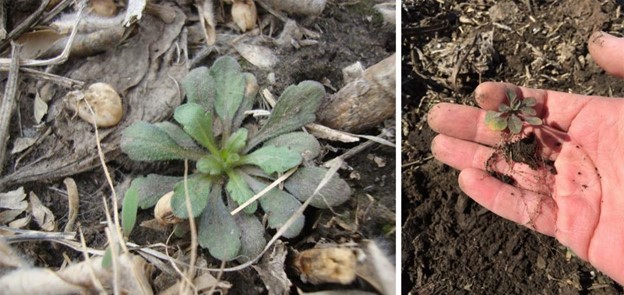3 Tips to Make Your Fall Burndown Count
A fall burndown can help control problematic winter annual weeds and kill weeds when they are actively growing. These winter annuals will take nutrients, moisture and can cause uneven planting conditions in the spring. Here are a few tips that can help you get good control of these and give you a clean planting bed come spring.
- Scout fields to determine if you have weeds and properly identify what weeds are present. Henbit, field pennycress and marestail are all common winter annuals. Henbit and field pennycress can be controlled with glyphosate, but the majority of marestail we see lately are glyphosate-resistant so adding 2,4-D will give you better control.
- Spray on warm sunny days. Weeds are more likely to take in chemical when they are actively growing. Daytime temperatures above 55 degrees Fahrenheit and nighttime temperatures around 40 degrees Fahrenheit will give you better control.
- Wait to spray until weeds are above the residue. It can be tempting to go spray as soon as you are done harvesting. Allowing weeds to grow and get above the prior crops’ residue can help give you better control as well. Keep in mind most winter annuals will still grow even after a hard freeze, so you usually have the month of November to spray.
If your fields are turning green this fall, a fall burndown might be the best way to control weeds prior to the 2024 growing season. Again, it’s important to identify the weeds present, select the proper chemical and rate and spray when weeds are big enough to be seen above the residue. All these factors will help you start the 2024 growing season with a clean slate. If you have questions on weed pressure, feel free to contact your local Hoegemeyer agronomist or DSM for recommendations.

